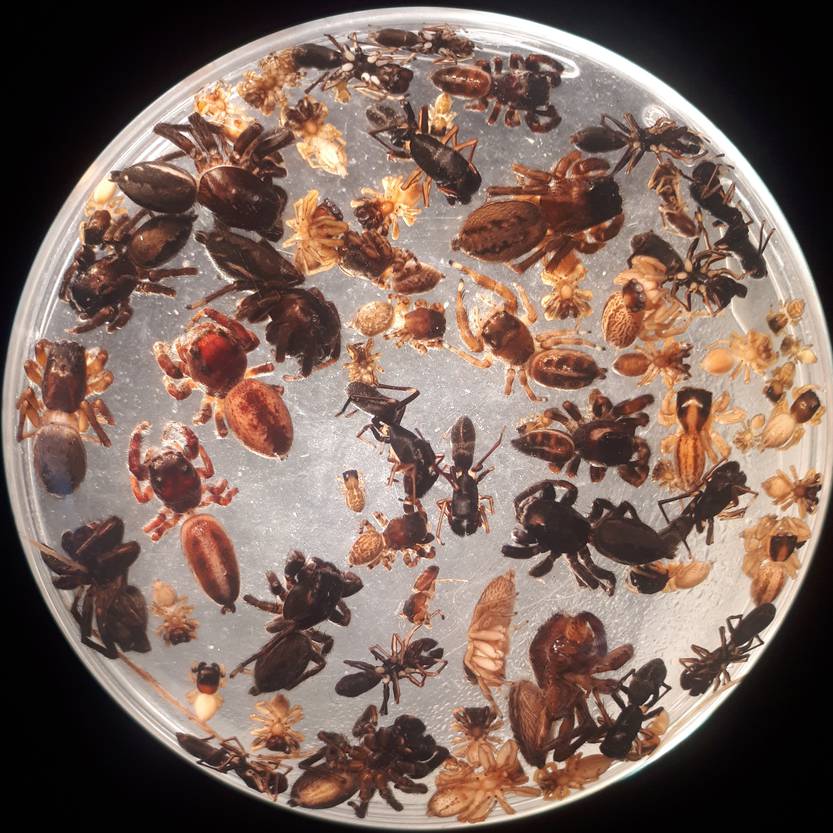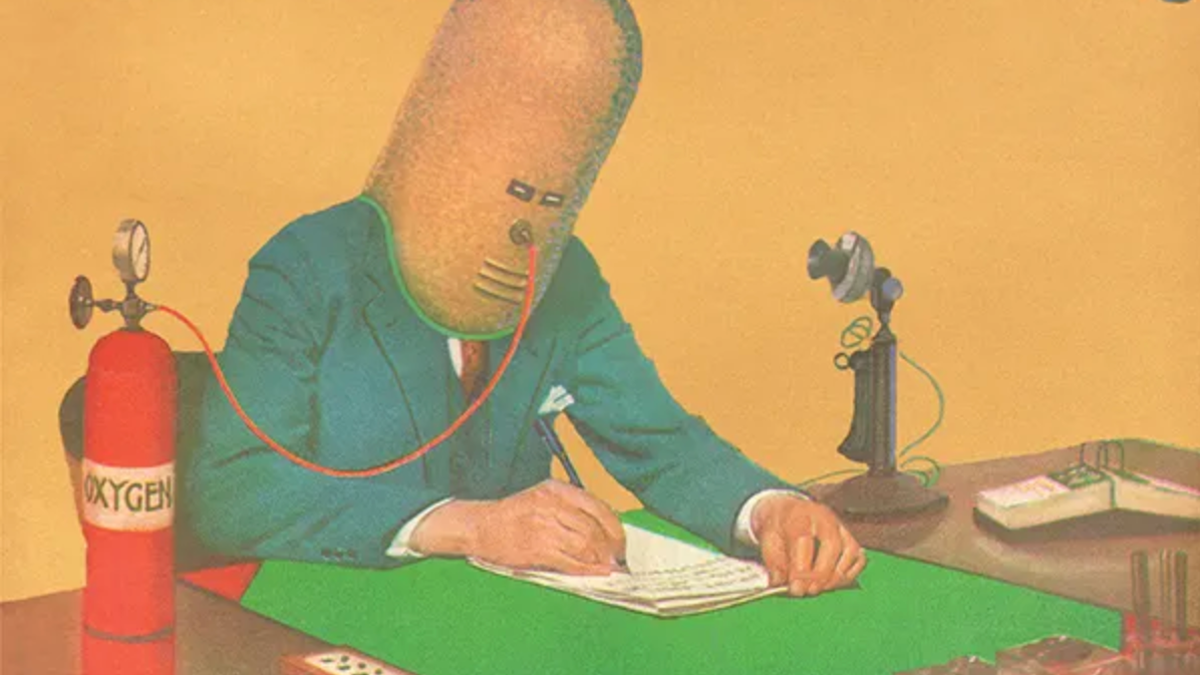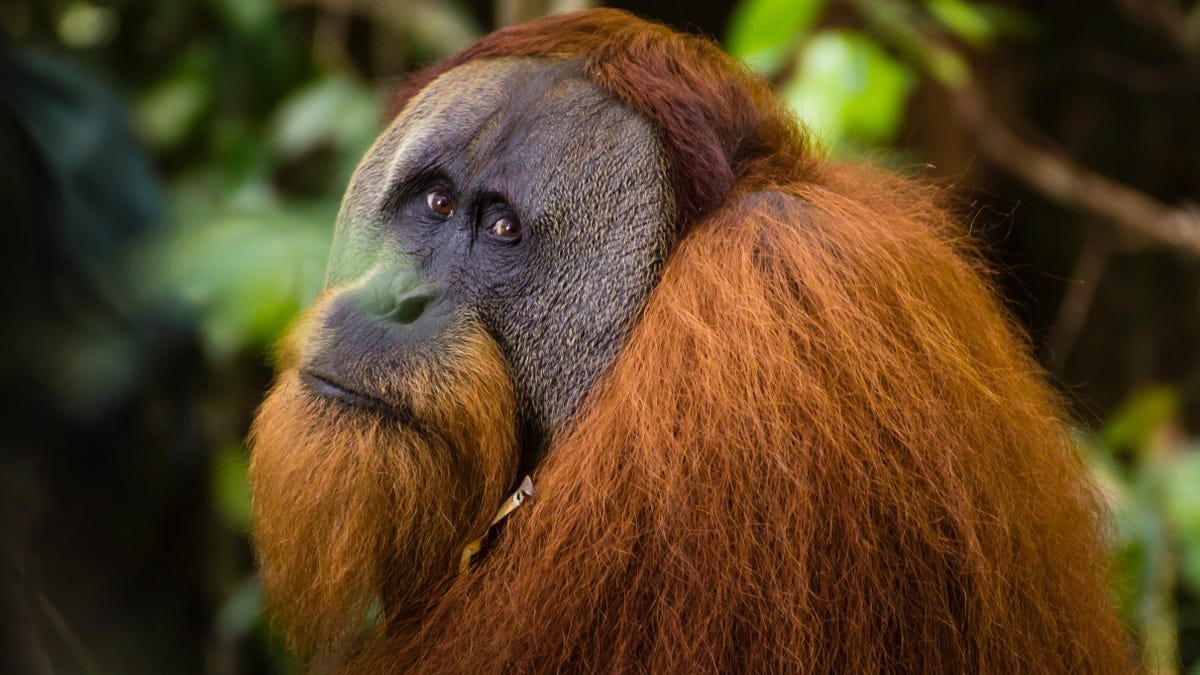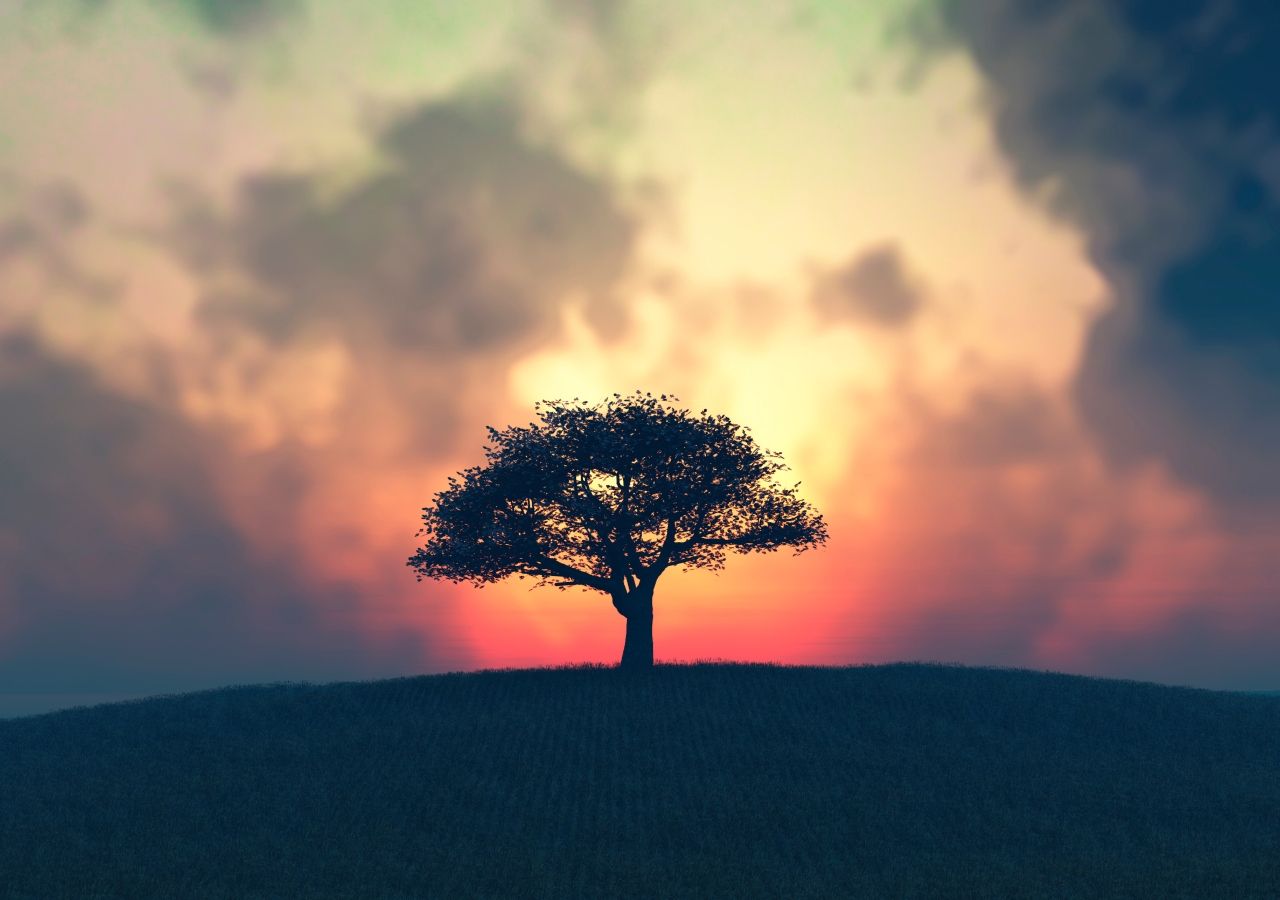Science is culture. And it can also be art, not only in the sense of inspiring, guiding or giving him tools, but also that it is itself the treatment of an approach that can produce aesthetic delight. With that in mind, the Basic Sciences Development Program (Pedeciba) and the Montevideo Photography Center (CDF) organized the Focus on Science contest.
Here we publish the winning works in the different categories, some open to the general public, such as Everyday Science and Art and Science, and also Field, Laboratory and General, intended only for students, researchers and people related to Pedeciba.
Qualification: Diversity hidden in a pile of grass
Photo: Damien Hagopián
Category: Laboratory
Description: “Salticidae It is the most diverse family of spiders, with more than 6,200 species distributed throughout the world. The photograph was taken in a binocular magnifying glass, observing saltines collected in tufts of grass from a grassland in Uruguay. Some species are 1.5 millimeters long, brightly colored, and others mimic ants. This diversity is hidden from our eyes. If we want to conserve it, we must know it and study it, so that in this way it comes to light and is not hidden in ‘a pile of grass’ “.
“I live in Melilla. One day they came home with a tractor to cut the grass on the property ”, says Damián, who we already know for his passion and work with arachnids. “I am using a method called ‘Japanese umbrella’, which consists of inverting an umbrella and hitting the vegetation to collect spiders. Seeing the piles of grass they were cutting, I wondered what would happen if I shook it over the umbrella. As he did so, lots of bugs began to appear. Many ”, he remembers.
“That grass piled up by the tractor, with which they later made bales, was a possibility that I could not pass up to see what bugs and which bouncers were hiding there. It was a sampling for the love of art, nothing systematized ”, says Damián, as if the scientist could dissociate himself from the curious person within him. “Some of the species that appeared and are seen in the photograph are new species, there is even a new species of jump for science ”, he adds, confirming the aforementioned. The jump They are spiders that imitate ants, something that Damián has been observing since he was in high school.
What he found in the pastures he took to the laboratory of the Entomology section of the Faculty of Sciences. “When I saw all that material under the magnifying glass, I don’t know whether to call it artistic, but I was so moved by what I saw, the diversity of colors, sizes, of spiders that imitate ants, that I felt the urge to take a picture of it.” But yes, it was just artistic what he saw. “I did not expect this award, I entered the contest as if to say that the spiders were also present,” he laughs happily.
When I interviewed him last time he was wearing a Spider-Man T-shirt. Peter Parker, the superhero’s alter ego, was a photographer. Just as art and science come together, so do fiction and reality. I tell him then that he is closer to Parker. “Obviously my favorite superhero is Spider-Man. Beyond the fact that Peter Parker photographed for the newspapers, and that I am not a superhero, if I had an arachnid power, it would be to marvel at what is hidden in the grass or wherever and that we generally do not see ”he smiles. But Damien is wrong: he also has the power to make others marvel at his wonder. Some of that was sure to be seen by the jury.
The light of Santa Lucía by Lucio Martínez
Qualification: The light of Santa Lucia
Photo: Lucio Martinez
Category: Art and science
Description: “Landscape astrophotography of the Santa Lucía River that shows the light pollution present in its environment, which affects, among other things, the observation of the sky. The photograph was captured in the riverside mount next to the old railway bridge of Paso Pache (Canelones). On the horizon you can see a dome of light coming from the town of Veinticinco de Agosto (San José) within minutes of completely obscuring the Milky Way as it descends over the horizon ”.
Lucio Martínez studied at the Faculty of Information and Communication of the University of the Republic, where he opted for the audiovisual orientation, and belongs to the Assembly for Water. “My taste for astrophotography arises from seeing the images and falling in love. As a lover of science fiction, astronomy and space, I always wanted to take those kinds of photos, “he says. It is not his only passion.
“I am in love with the river and the city of Santa Lucía. He had always seen astrophotographs of Uruguay, but had not seen the Santa Lucia. I was scared and thought it would be impossible because of the light pollution, but I was encouraged and in June I went to take the first ones thinking it was crazy. I was surprised by the results, and then I began to visit and photograph all the places that are emblematic of Santa Lucía ”, he says.
With a good eye and sensitivity, his photos bring the calm of the night sky while warning about light pollution, which has to add to all the problems that affect Santa Lucía. “That the jury is from the CDF means a lot to me, because for the work I’m doing I can’t think of a better award than this, which recognizes the combination of art and science.”
Memories That Will Forever Shine by Guillermo Roth
Qualification: Memories that will forever shine
Photo: William Roth
Category: Science in everyday life
Description: In the scene you can see two jewelry boxes, a brooch and two earrings made of uranium glass. Toiletries made of this material were often used in 19th century Europe. The exposure of the pieces to ultraviolet light causes the luminescent phenomenon called fluorescence.
A sky under our feet by Santiago Guerrero
Qualification: A sky under our feet
Photo: Santiago Guerrero
Category: Country
Description: “The photograph captures the discovery of an amethyst mega-stone in an underground mine in the Gemological District of Los Catalanes, department of Artigas. The brilliant amethyst crystals, in contrast to the opaque basalt that surrounds them, create, in the absolute darkness of an underground mine, an arrangement reminiscent of a starry night ”.
“I like the picture. And when you do something you like, you take pictures of it, in my case the stones, ”says Santiago Carrero, a geologist who is doing his Pedeciba master’s degree in Geosciences. “I go to Artigas for my master’s thesis and I always try to take photos. Also for my work in the National Directorate of Mining and Geology. I have been going for eight years and this is the first decent photo I managed to take. Underground photography is complicated by the issue of light, but I took hold of his hand, “he says with a laugh. But that’s not why you shouldn’t take it seriously: the first photo that looks good won an award!
The title of the photo necessarily leads us to see that night sky. “The title is authored by the person whose hand is seen in the photo, Patricia, who is also a geologist and is doing her master’s degree in Environmental Sciences. When he saw the photo he told me it looked like a sky underfoot. I liked the photo, but she had the sensitivity to see that ”, recognizes Santiago.
But Santiago did not win one, but two awards. “I took the photo of the galena to upload to Instagram to show what I was doing. It was not a very elaborate photo, really. What did work was the device itself, “he says, once again being totally honest.
Perhaps the relationship between minerals and everyday life has earned him the prize; beyond the fact that the radios no longer work at galena for many years, it continues to be a strong and even nostalgic image. “That was the goal not of the photo but of the device. We put it together to show that minerals are in the everyday. Beyond the fact that the gurises are told that cell phones have about 230 elements and so many minerals, it is an abstract medium. With the galena it is clearer and simpler, even though radios are no longer like that, they work with a glass ”, he points out.
La Galena – Santiago Guerrero
Qualification: The galena
Photo: Santiago Guerrero (Pedeciba student)
Category: general
Description: “Galena or lead sulfide is a mineral from which this metal is extracted. It was popularly known as a synonym for radio, since with a crystal of this mineral a radio receiver capable of detecting amplitude modulated waves (AM) was built at a very low cost. The photo portrays a device of this type, built for dissemination activities on the importance of minerals in everyday life. Galena crystals extracted in the department of Lavalleja were used ”.



:quality(85)/cloudfront-us-east-1.images.arcpublishing.com/infobae/EK3E3GEBHZDQXCFII2YMYIQUBM.jpg)

